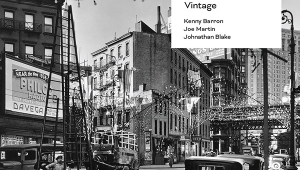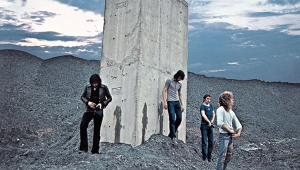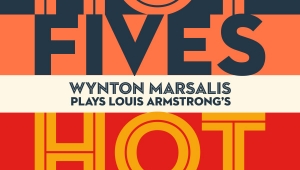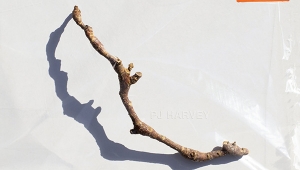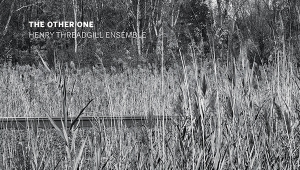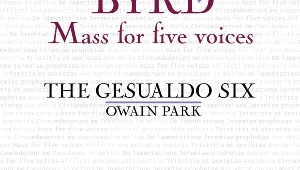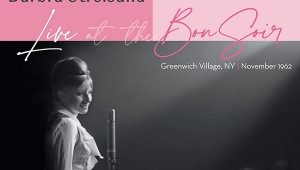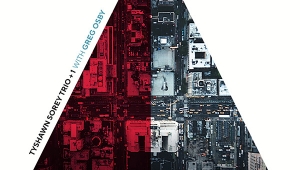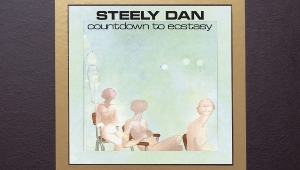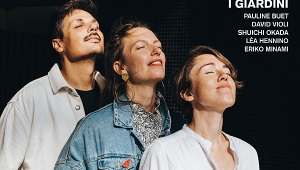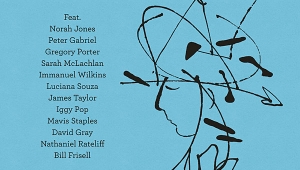| Columns Retired Columns & Blogs |
Recording of April 2008: The Third Man
ENRICO RAVA/STEFANO BOLLANI: The Third Man
Enrico Rava, trumpet; Stefano Bollani, piano
ECM 2020 (CD). 2007. Manfred Eicher, prod.; Stefano Amerio, Gabriele Kamm, engs. DDD. TT: 72:06
Performance ****1/2
Sonics ****
Enrico Rava, trumpet; Stefano Bollani, piano
ECM 2020 (CD). 2007. Manfred Eicher, prod.; Stefano Amerio, Gabriele Kamm, engs. DDD. TT: 72:06
Performance ****1/2
Sonics ****
Enrico Rava and Stefano Bollani represent two categories—two eras—of Italian jazz musician. Rava is 67, mostly self-taught, and was famous when almost no Italian jazz musicians were known outside Italy. He has long been acknowledged as one of the greatest jazz trumpet players, but because, before the new millennium, no other Italian approached him in stature, he was regarded as a one-off.
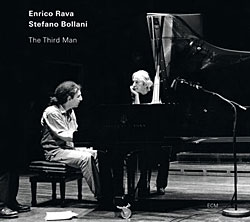 Bollani is 35, a graduate in classical piano with honors from the Conservatorio Luigi Cherubini in Florence, and is part of the generation that has recently established Italy as the most important jazz scene in the world outside the US. Bollani has played in Rava's bands since he was 24. Rava was instrumental in persuading him to abandon "the unconditional fidelity to the text" (Bollani's words) imposed by classical music, and to devote himself—and his extraordinary piano technique—to improvisation.
Bollani is 35, a graduate in classical piano with honors from the Conservatorio Luigi Cherubini in Florence, and is part of the generation that has recently established Italy as the most important jazz scene in the world outside the US. Bollani has played in Rava's bands since he was 24. Rava was instrumental in persuading him to abandon "the unconditional fidelity to the text" (Bollani's words) imposed by classical music, and to devote himself—and his extraordinary piano technique—to improvisation.
As an ensemble format, the duo is overrated. Jazz duos, for all their reductivism, are often paradoxically crowded, too busy, too contrapuntal. Virtually no major jazz musician, living or dead, is first remembered for work in a duo.
This duo is different. The Third Man takes place on a spacious sonic landscape. Rava plays ambiguous lines that hang in the open air, unresolved. Rava, with Tomasz Stanko, is one of Europe's two great existentialist trumpet players. But Rava's tone is pure and blindingly bright, without Stanko's rasp and spit. Bollani, from measure to measure, might play anything. He might configure intricate patterns that suggest his hours at the conservatory studying Poulenc or Milhaud. But more often here he pares himself down. He sounds focused and deeply centered in the creative imperative of this stark joint venture. Alongside Rava's veering trajectories, he sets fragmentary single-note lines of austere lyricism. It is possible to hear Bollani's erudition and academic discipline in his sense of structure. You hear the impulsive emergence of his ideas, and then it is exhilarating when you realize that they have made a new form.
The 12 tracks contain many possibilities of song. There are specific songs, such as "Estate," by Italian popular singer Bruno Martino; "Felipe," by Moacyr Santos; and "Retrato em Branco y Preto," by Antonio Carlos Jobim. There are original song concepts by Rava or Bollani, and the title track is an entirely improvised cryptic threnody. Their moment-to-moment melodicism makes them all songs, but they are snatches of melody that float and dissolve and recrystallize.
Even if you know the melody of "Estate," you might not at first recognize it in the tentative chiming with which Bollani opens the track in the right channel, or in the drawn-out smears with which Rava responds in the left. But "Estate" is present for both players, freely imagined. Rava's chops are epic—the force of his ascents knocks you back in your chair. More important are the endless implications of his unexpected and open-ended phrases. More important still is what Rava and Bollani create concurrently. They listen to one another intensely, the lead position seamlessly alternating between them. Their commingling counterpoint arrives at many startling lyric breakthroughs. On Rava's "Birth of a Butterfly," each player simultaneously creates his own metaphor for coming into being.
"The Third Man" is the track that provides a way of understanding the particular nocturnal atmosphere of this recording. After the fact, Rava and Bollani dedicated that improvised piece, and the entire album, to Orson Welles and the film noir tradition. The art of both Rava and Bollani is highly cinematic. Their previous collaboration, the trio album Tati (2004), was a tribute to French actor-director Jacques Tati. In its musical ambivalence and after-midnight ambience, The Third Man indeed evokes film noir, but in an iteration that is never one-dimensional or complacent. Both players, especially Rava, are always willing to explode through the quietude in response to creative impulse.
The sonic character of this album is atypical for ECM. Stefano Amerio (who seems to have replaced Jan Erik Kongshaug as producer Manfred Eicher's engineer of choice) recorded The Third Man in the Auditorio Radio Svizzera, in Lugano, Switzerland. The music is clearly taking place in the large acoustic space of an empty concert hall. Compared to a highly detailed ECM studio recording, there are much longer delays on Rava's trumpet, and Bollani's piano notes are more diffuse. The physical setting of this recording is inseparable from its aesthetic realization. It sounds and feels as if, in this space, Rava and Bollani have shut themselves off from the rest of the world. Yet, mysteriously, we are allowed to listen.
This duo is different.—Thomas Conrad
- Log in or register to post comments


